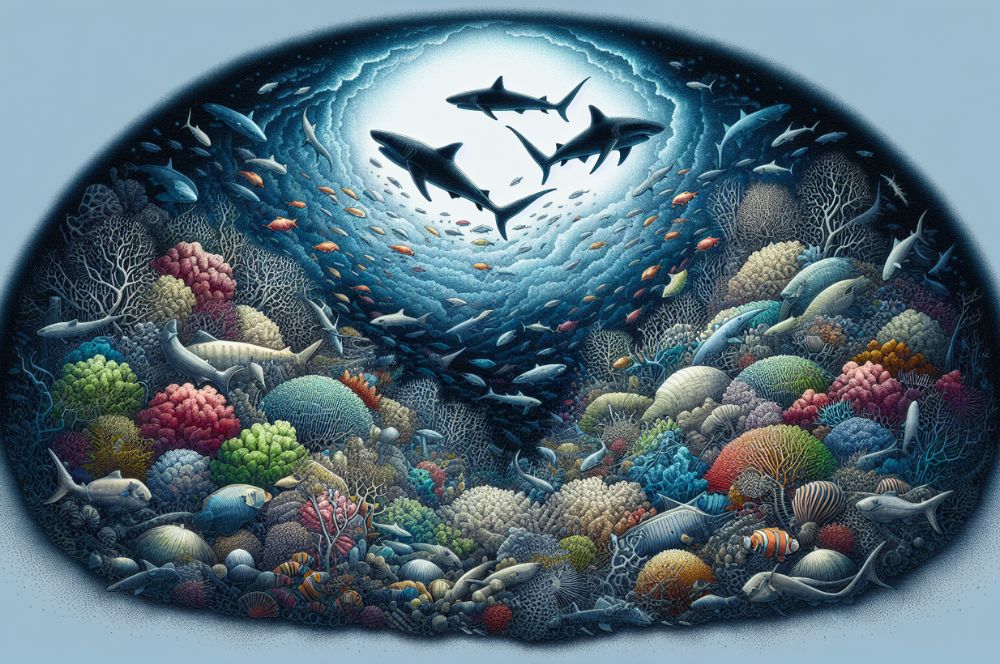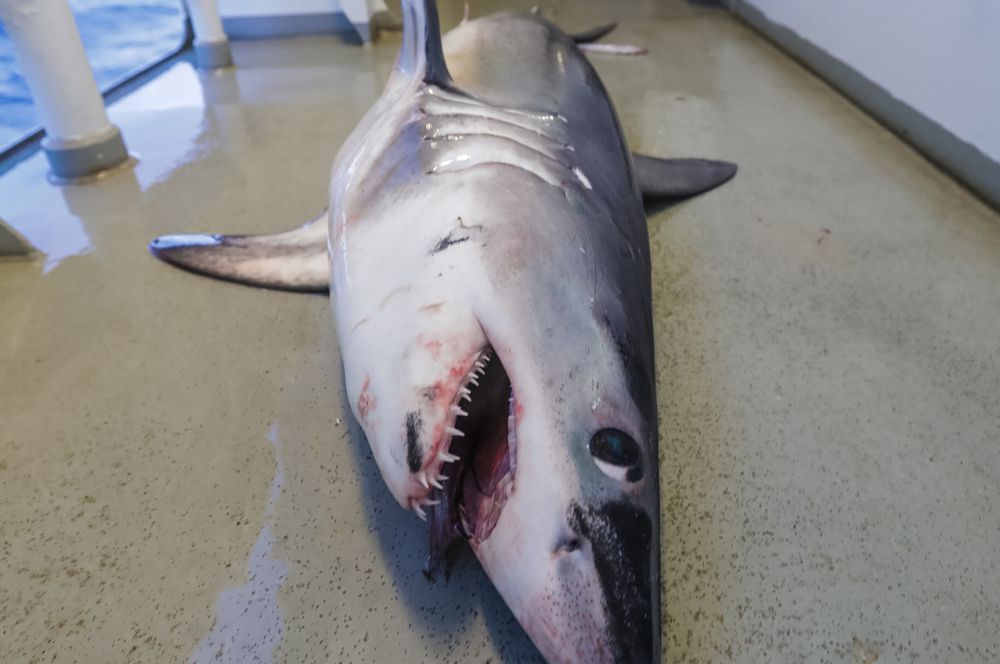You have 0 product(s) in your cart.
Abyss Scuba Diving
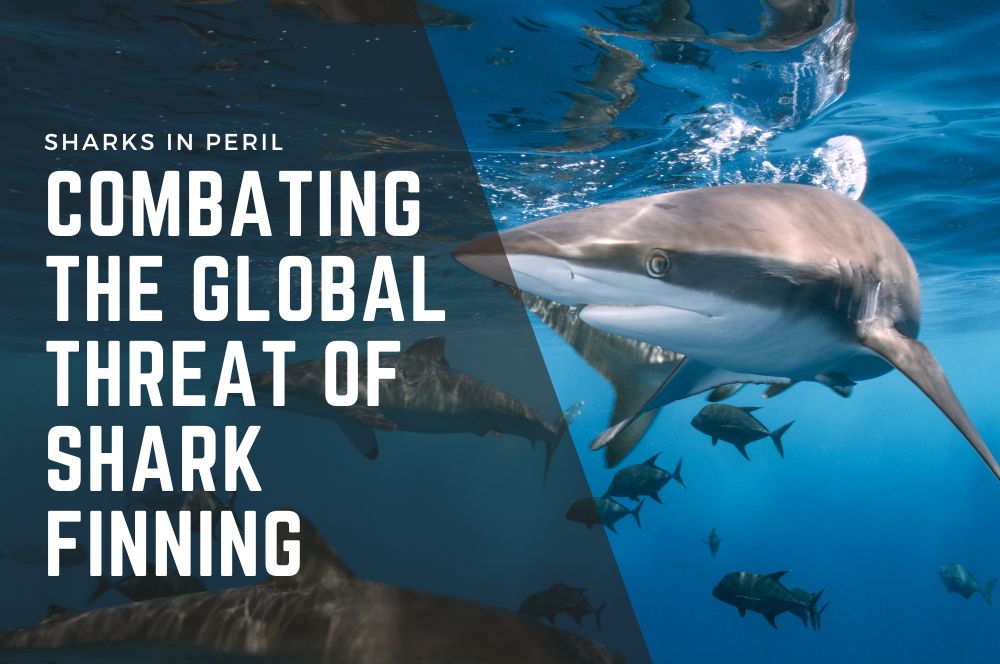
Sharks in Peril: Combating the Global Threat of Shark Finning
Sharks, vital for maintaining oceanic balance, are in peril. Human activities, chiefly shark finning and overfishing, jeopardize their survival. Our article delves into the impacts on sharks and the critical conservation actions necessary to protect these vital marine predators.
Key Takeaways
-
Sharks are vital apex predators in marine ecosystems, their decline due to overfishing and finning has catastrophic effects on the balance and health of the oceans.
-
Shark finning, driven by the demand for shark fin soup, is a brutal practice threatening shark populations, with significant involvement from illegal trade networks.
-
Conservation efforts, including sustainable fishing practices, non-lethal alternatives, and protected areas, are crucial for the survival of shark populations and maintaining marine biodiversity.
The Critical Role of Sharks in Marine Ecosystems
Sharks have patrolled the world’s oceans for over 400 million years, long before dinosaurs roamed the earth. As apex predators, they are the architects of marine ecosystems, shaping the behavior and distribution of species below them in the food chain. Their presence ensures a delicate balance, allowing diverse marine life to flourish.
Yet, despite their significance, sharks are often overshadowed by myths and misconceptions, clouding the public’s understanding of their true nature and the urgent need for their preservation.
Apex Predators at Risk
The resilience of shark populations is being tested by overfishing and exploitation. The biological characteristics of sharks, such as slow growth, late maturity, and low reproductive rates, render them particularly vulnerable to population declines. The plight of species like the Oceanic Whitetip Shark, with numbers reduced by more than 98%, stands as a stark reminder of the fragility of these apex predators.
These sharks, now critically endangered, are also facing the impacts of a warming ocean, threatening their prey distribution and further jeopardizing their survival.
Guardians of Coral Reefs
Coral reefs, often described as the rainforests of the sea, rely on sharks to maintain their complex and vibrant ecosystems. Sharks play a crucial role in the reef ecosystem by:
-
Managing the populations of predatory fish
-
Allowing herbivorous species to thrive
-
Keeping algae growth in check
-
Ensuring coral health
With fewer sharks, the delicate balance within coral reef ecosystems is disturbed, leading to slower recovery from damage and potential ecosystem collapse. The decline in shark numbers can trigger a cascade of detrimental effects, resulting in a shift from coral to algal dominance, which fundamentally alters the habitat.
Migratory Patterns and Ocean Health
Sharks often embark on long migratory journeys, with their patterns providing valuable indicators of ocean health. These migrations, however, bring them into contact with myriad threats, primarily from fishing pressure that has grown 18-fold since 1970, devastating shark and ray populations of open ocean sharks and rays.
The effectiveness of protective measures like Marine Protected Areas (MPAs) is contingent upon factors such as size, enforcement, and the migratory nature of sharks, which may necessitate expansive protected zones for their conservation.
The Brutal Reality of Shark Finning
The demand for shark fins and shark meat, driven by the market for shark fin soup, has led to the brutal practice of shark finning. This inhumane act involves the removal of fins from live sharks, often leaving them to die a slow and painful death.
The scale of this practice is staggering, contributing significantly to the global decline in shark populations and threatening the very existence of these ancient mariners.
Live Shark Finning
Live shark finning is a particularly barbaric practice, where sharks are captured and their fins are removed while they are still alive. The mutilated animals are then discarded back into the ocean, unable to swim or breathe properly, leading to a painful and distressing demise through suffocation, blood loss, or predation.
This wasteful practice underscores the need for urgent action to protect sharks and maintain the health of marine ecosystems.
The Demand for Shark's Fin Soup
Shark fin soup has long been a symbol of wealth and celebration in Chinese cuisine, heralding from the tables of emperors to modern-day festivities such as weddings. A single bowl can command prices up to $100, reflecting the high value placed on this dish. However, as the Chinese middle class expands, so too does the consumption of shark fin soup, leading to increased targeting of shark species and severe population declines.
This high demand, coupled with traditional beliefs in the soup’s health benefits, has put many shark species on the path to extinction.
The Illegal Shark Finning Underworld
The illegal shark fin trade is a dark and complex web, intertwined with international criminal organizations engaged in various illicit activities. These networks traffic in shark fins, contributing to the illegal wildlife trade and posing a significant challenge to enforcement efforts. Operations like Apex have exposed such criminal rings, seizing assets and disrupting the flow of illegally harvested shark fins to markets.
Despite some countries’ legislation banning shark finning, the practice persists, often under the guise of sophisticated smuggling operations. The failure of some vessels and countries to adhere to international treaties exacerbates the problem, allowing illegal finning to continue unabated.
Endangered Species: The Plight of Sharks and Rays
Sharks and rays, including whale sharks, form a diverse group of marine animals, but many species are now on the brink of extinction. Overfishing and finning practices have led to a dramatic decrease in their numbers, threatening not just individual species but the balance of marine ecosystems as a whole.
With an alarming increase in global shark fishing mortality, it’s clear that sharks and rays are facing a global extinction crisis, with some species potentially already lost.
Hammerhead Sharks: A Symbol of Decline
Hammerhead sharks, renowned for their distinctive head shape, are often targeted for their fins due to the high market demand. This has led to significant population declines, placing species like the Scalloped and Great Hammerhead on the endangered list. In regions like Australia, regulations have been put in place to protect these species, requiring them to be released if caught and prohibiting their take in certain areas.
Internationally, hammerhead sharks receive protection through listings on the CITES Appendices, which aim to control their trade and prevent further decline.
Devil Rays and Mantas: Caught in the Crossfire
Devil rays and mantas, while not the primary target of fisheries, often become bycatch, which can severely impact their populations. Survival rates after capture vary widely among species, and measures such as the ‘manta grid’ have been implemented to improve survival rates upon release.
Aerial monitoring and predictive modeling are effective in reducing bycatch by helping fishers avoid areas with high mobulid aggregations. Education about the endangered status of these species and the promotion of better handling and release processes play a crucial role in their conservation.
Shortfin Mako Sharks: Racing Against Extinction
Shortfin mako sharks are another species facing critical challenges, with the IUCN listing them as endangered due to overfishing and the absence of targeted conservation measures. Despite their precarious status, there is a lack of a Recovery Plan for the shortfin mako shark under the EPBC Act, highlighting a significant gap in their protection.
This lack of action underscores the need for immediate and effective conservation strategies to prevent threatened species from racing to extinction.
The Global Shark Fin Trade: A Threat to Survival
The insatiable demand for shark fins has fueled a global trade that poses a direct threat to the survival of many shark species. Approximately 1.4 million tonnes of sharks are caught annually, with the blue shark being one of the most heavily targeted species for its fins. This demand is not only driving overfishing but also encouraging industries to continue targeting these species, even as they face the risk of local or global extinction.
China's Role in the Fin Trade
China’s consumption of shark fins has historically driven the global market, with policies and conservation campaigns in place attempting to reduce this demand. The Chinese government’s ban on shark fin soup at official banquets and the influence of awareness campaigns have led to a noticeable decline in shark fin consumption. However, as demand decreases in China, other countries like Thailand have emerged as leading shark fin exporters, showing a shift in the global trade landscape.
International Trade Regulations
International regulations are critical in managing the trade of shark fins, but they face challenges such as verifying the legality and origin of fins in the market. While the EU and the US have taken steps to ban shark finning and promote sustainable fishing practices, there is a need for stronger global enforcement and transparency.
Organizations like the MSC are working towards preventing shark finning and ensuring responsible fishing through certification and consumer awareness.
The Western Australia Example
Western Australia presents a beacon of hope in shark conservation, pioneering non-lethal methods and innovative solutions such as the Eco Shark Barrier to protect marine life. These innovative approaches to shark management showcase how regions can lead by example, promoting the coexistence of humans and sharks without resorting to harmful practices.
The Impact of Fisheries on Sharks
Fisheries around the world have a profound impact on shark populations. Targeted fishing and bycatch from recreational, industrial, and artisanal fisheries contribute significantly to the decline in shark numbers, threatening the stability of marine ecosystems.
Recreational Shark Fisheries
Recreational shark fishing, while a popular global activity, poses substantial risks to shark populations. Practices such as catch-and-release can still have negative impacts on the survival and fitness of sharks.
The shift towards catch-and-release fishing tournaments is a positive development, as it can provide valuable data for shark conservation while reducing direct mortality.
Industrial Fishing Vessels: Nets of Destruction
Industrial fishing vessels, with their massive nets, have the capacity to devastate shark populations by exploiting previously untouched habitats. These vessels, particularly those targeting tuna, often catch large numbers of sharks as bycatch, which is a significant contributor to the decline of shark and ray species.
Artisanal and Localized Threats
Artisanal fisheries, while important for local economies, can contribute significantly to the overexploitation of shark populations. In areas like the Union of Comores, locally-caught fish, including sharks, are a major source of animal protein. Gillnet fishing, often used by small-scale and semi-industrial local fishers, poses a greater threat to species like mobulids than industrial tuna fishing, calling attention to the need for sustainable management in these fisheries.
Conservation Efforts and Sustainable Practices
Conservation efforts and the implementation of sustainable fishing practices are essential for protecting shark populations and promoting healthy marine ecosystems.
There are successful examples of sustainable shark fisheries, such as those in Lombok, Indonesia, which demonstrate that comprehensive management can lead to positive outcomes.
Non-lethal Alternatives
A more compassionate approach to shark conservation involves non-lethal alternatives. In New South Wales, drones equipped with image recognition software proactively monitor for sharks, providing real-time data for beach safety without harming marine life.
In more proactive measures, Australia’s complete prohibitions on shark fishing, beyond finning, have significantly reduced mortality rates, demonstrating the effectiveness of these methods.
Labeling and Consumer Awareness
Consumer choices can influence the market and, consequently, the fate of sharks. Research suggests that informed consumers, through robust labeling and traceability, can dramatically affect the demand for shark products.
The MSC certification serves as a beacon of assurance, guiding consumers to support sustainable fisheries and, by extension, shark conservation efforts.
Protected Areas and Sanctuaries
Protected areas and sanctuaries have proven to be a sanctuary for sharks and rays, offering refuge from the dangers of fishing and exploitation. The establishment of the world’s first national Shark Sanctuary by Palau sparked a wave of similar initiatives across the globe.
The proposed Shark Bay Shark Ark Project in Australia aims to create a massive sanctuary that would safeguard numerous shark species, setting a gold standard for marine conservation. The effectiveness of these areas is often amplified by the support of local communities and the enforcement of regulations, ensuring that these sanctuaries truly serve their intended purpose as safe havens for marine life.
Summary
The journey through the shadowed depths of the ocean reveals a world where sharks, the ancient guardians of marine balance, are facing an existential threat. From the brutal reality of finning to the global trade that fuels it, and the impact of fisheries to the rays of hope cast by conservation efforts, the narrative weaves a story of interconnectedness. The fate of sharks is not sealed; through informed choices, stringent regulations, and the establishment of sanctuaries, we can rewrite the future of these vital creatures and the oceans they inhabit.
Frequently Asked Questions
How many types of sharks exist?
There are more than 500 species of sharks divided into eight orders, including the Carcharhiniformes, Hederodotiformes, Hexanchiformes, Lamniformes, Orectolobiformes, Pristiophoriformes, Squaliformes, and Squatiniformes, with common ones like the Blue shark, Bull shark, Tiger shark, and hammerhead sharks.
What is the fastest shark?
The shortfin mako is the fastest shark in the world, reaching speeds of more than 70km per hour (43 mph) thanks to its torpedo-shaped body and powerful tail. It is known for chasing fast-swimming prey like tuna and swordfish.
What eats a shark?
Orcas, Cape clawless otters, Nile crocodiles, seals and sea lions, large fish, other sharks, chacma baboons, and sperm whales are known to eat sharks. So, sharks have several predators in their ecosystem.
What is the rarest shark?
The rarest shark species is the speartooth shark (Glyphis glyphis), found only in tropical rivers in New Guinea and northern Australia. It is one of the rarest shark species on earth and is not targeted by fisheries for its meat or fins, but may be accidentally caught in fishing nets as by-catch.
Why are sharks important to the marine ecosystem?
Sharks are important to the marine ecosystem because they act as apex predators, helping to regulate the populations of other marine species and promote biodiversity, which in turn supports the health of crucial habitats like coral reefs.
RELATED POSTS
-
Great White Sharks Habitat | White…
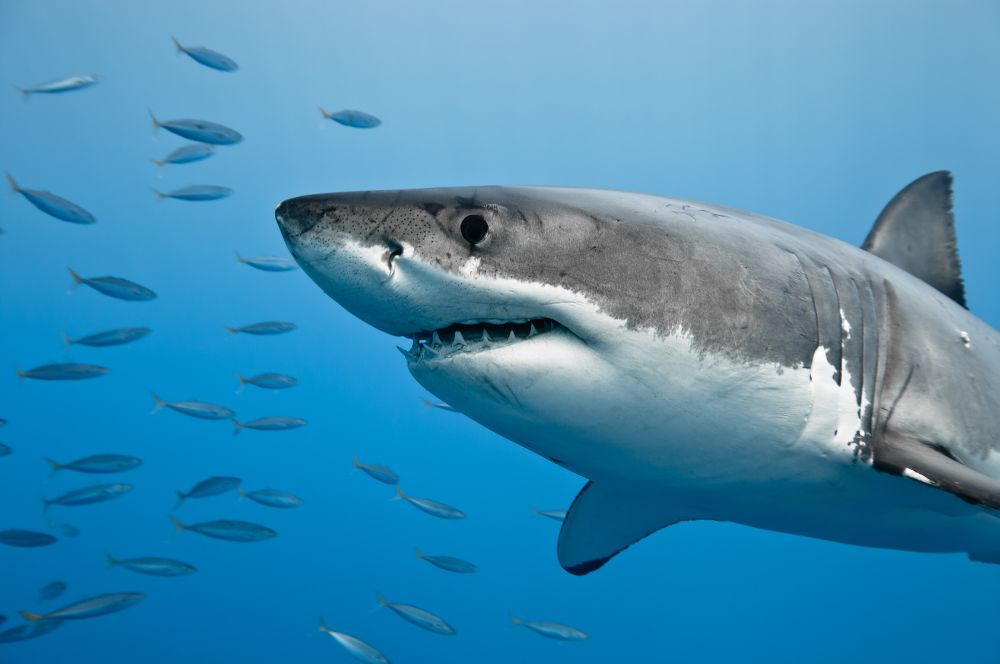
Great White Sharks…
Great White Sharks Habitat Great White Shark was known best for his roles on Jaws. It is considered the most […] -
Shark Diving Sydney | Abyss Scuba Diving
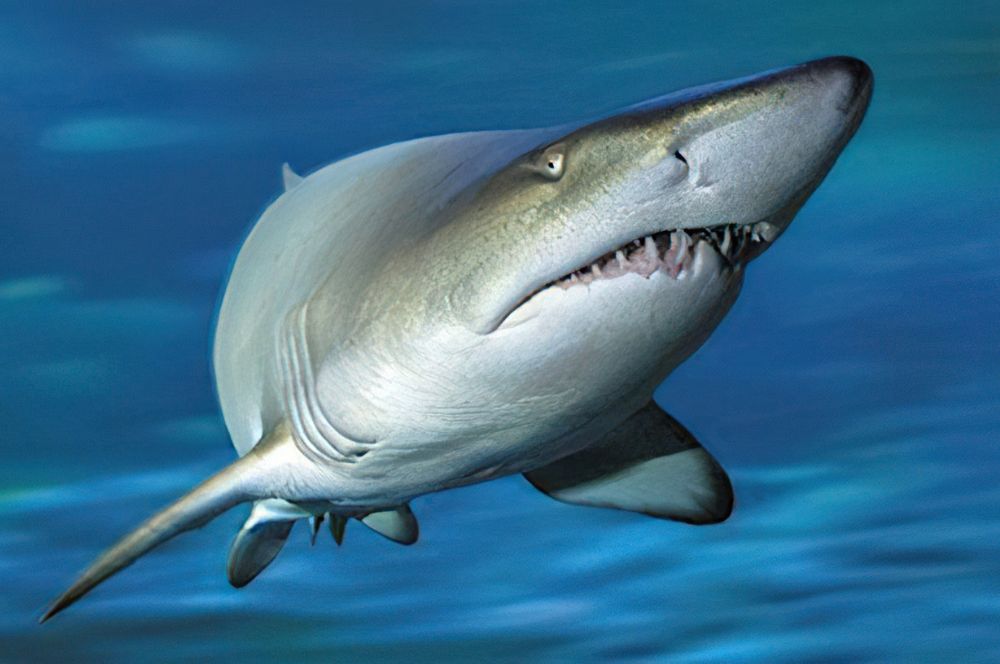
Shark Diving Sydney…
Shark Diving Sydney - An Exciting Adventure Sharks are amazing to observe in their natural habitat. Sharks […] -
What is Sydney's Most Common Shark?
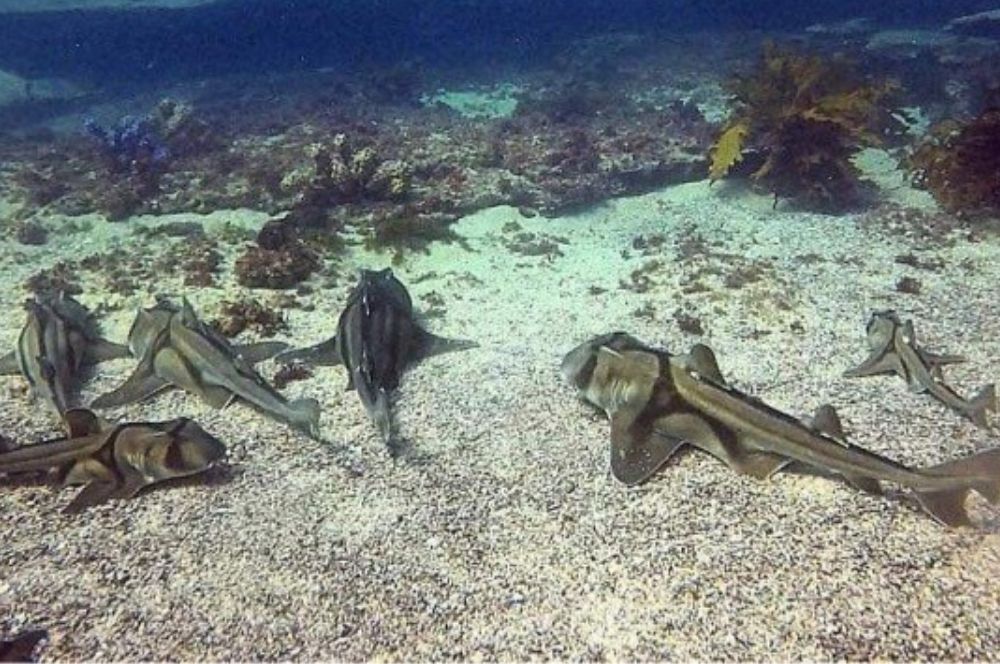
What is Sydney's Most…
What is Sydney's Most Common Shark? The Port Jackson Shark is the common shark seen by divers in the waters […] -
Scuba Diving with Grey Nurse Sharks
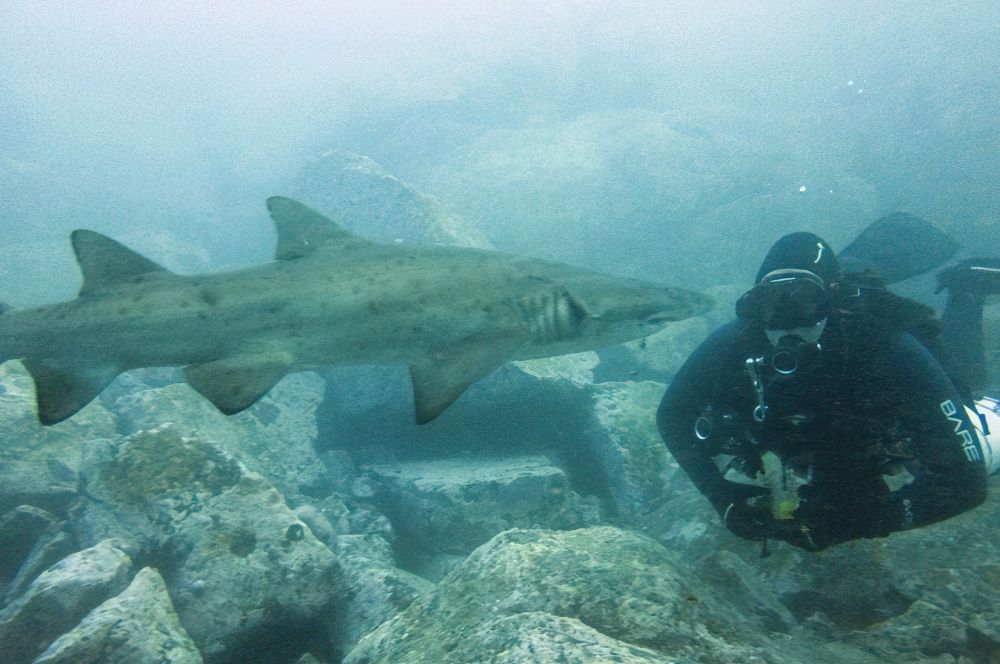
Scuba Diving with Grey…
About 18 months ago, a small group of grey nurse sharks were spotted at the Gravel Loader dive site in Shell […]
Recent Posts
